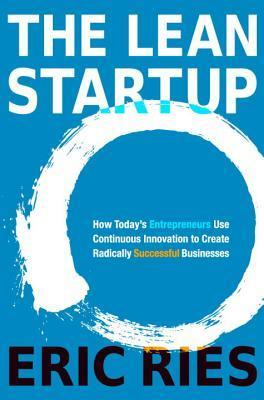More on this book
Community
Kindle Notes & Highlights
by
Eric Ries
I believe “entrepreneur” should be considered a job title in all modern companies that depend on innovation for their future growth.
Just as scientific experimentation is informed by theory, startup experimentation is guided by the startup’s vision. The goal of every startup experiment is to discover how to build a sustainable business around that vision.
“Traditionally, the product manager says, ‘I just want this.’ In response, the engineer says, ‘I’m going to build it.’ Instead, I try to push my team to first answer four questions: 1. Do consumers recognize that they have the problem you are trying to solve? 2. If there was a solution, would they buy it? 3. Would they buy it from us? 4. Can we build a solution for that problem?” The common tendency of product development is to skip straight to the fourth question and build a solution before confirming that customers have the problem.
Every business plan begins with a set of assumptions. It lays out a strategy that takes those assumptions as a given and proceeds to show how to achieve the company’s vision. Because the assumptions haven’t been proved to be true (they are assumptions, after all) and in fact are often erroneous, the goal of a startup’s early efforts should be to test them as quickly as possible.
The first challenge for an entrepreneur is to build an organization that can test these assumptions systematically. The second challenge, as in all entrepreneurial situations, is to perform that rigorous testing without losing sight of the company’s overall vision.
The importance of basing strategic decisions on firsthand understanding of customers is one of the core principles that underlies the Toyota Production System. At Toyota, this goes by the Japanese term genchi gembutsu, which is one of the most important phrases in the lean manufacturing vocabulary. In English, it is usually translated as a directive to “go and see for yourself” so that business decisions can be based on deep firsthand knowledge.
As Steve Blank has been teaching entrepreneurs for years, the facts that we need to gather about customers, markets, suppliers, and channels exist only “outside the building.” Startups need extensive contact with potential customers to understand them, so get out of your chair and get to know them. The first step in this process is to confirm that your leap-of-faith questions are based in reality, that the customer has a significant problem worth solving.
customer archetype, a brief document that seeks to humanize the proposed target customer. This archetype is an essential guide for product development and ensures that the daily prioritization decisions that every product team must make are aligned with the customer to whom the company aims to appeal.
The truth is that most managers in most companies are already overwhelmed with good ideas. Their challenge lies in prioritization and execution, and it is those challenges that give a startup hope of surviving.
a good design is one that changes customer behavior for the better.
The first company sets out with a clear baseline metric, a hypothesis about what will improve that metric, and a set of experiments designed to test that hypothesis.
How often should you release a product? Is there a reason to release weekly rather than daily or quarterly or annually? Product releases incur overhead, and so from an efficiency point of view, releasing often leaves less time to devote to building the product. However, waiting too long to release can lead to the ultimate waste: making something that nobody wants.
Traditional departments create incentive structures that keep people focused on excellence in their specialties: marketing, sales, product development. But what if the company’s best interests are served by cross-functional collaboration? Startups need organizational structures that combat the extreme uncertainty that is a startup’s chief enemy.
value in a startup is not the creation of stuff, but rather validated learning about how to build a sustainable business. What products do customers really want? How will our business grow? Who is our customer? Which customers should we listen to and which should we ignore? These are the questions that need answering as quickly as possible to maximize a startup’s chances of success. That is what creates value for a startup.
the logic of validated learning and the minimum viable product says that we should get a product into customers’ hands as soon as possible and that any extra work we do beyond what is required to learn from customers is waste.
“Organizations have muscle memory,” and it is hard for people to unlearn old habits.
Functional specialists, especially those steeped in waterfall or stage-gate development, have been trained to work in extremely large batches. This causes even good ideas to get bogged down by waste.
Operating in this framework, internal teams essentially act as startups.
any innovation system eventually will become the victim of its own success. As the sandbox expands and the company’s revenue grows as a result of the sandbox’s innovations, the cycle will have to begin again. The former innovators will become guardians of the status quo. When the product makes up the whole sandbox, it inevitably will become encumbered with the additional rules and controls needed for mission-critical operation. New innovation teams will need a new sandbox within which to play.


